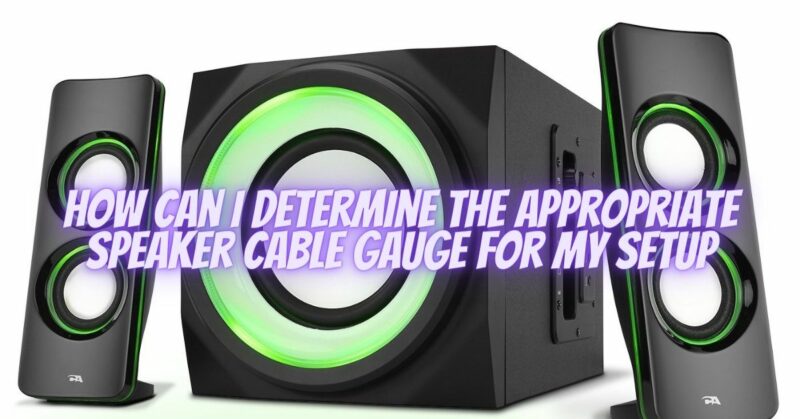Choosing the appropriate speaker cable gauge is crucial for optimal audio performance and efficient power transmission in your audio system. Speaker cables come in different gauges, representing the thickness or cross-sectional area of the conductors. Selecting the right gauge ensures that the speaker cables can effectively handle the power requirements of your speakers without compromising sound quality. In this article, we will guide you through the process of determining the appropriate speaker cable gauge for your setup, considering factors such as power requirements, cable length, and budget.
- Power Requirements:
The power requirements of your speakers are a primary consideration when determining the appropriate speaker cable gauge:
a. Wattage rating: Check the wattage rating of your speakers. Higher-powered speakers generally require thicker gauge cables to handle the increased power flow without significant signal loss or heating.
b. Impedance: Consider the impedance rating of your speakers, usually measured in ohms. Speakers with lower impedance ratings (such as 4 ohms) demand thicker gauge cables to ensure sufficient power transfer and avoid excessive voltage drop.
c. Amplifier or receiver specifications: Review the power output specifications of your amplifier or receiver. It is essential to match the power capabilities of the amplifier to the power handling capabilities of the speakers. This will guide you in selecting the appropriate gauge cable to support the power requirements of the system.
- Cable Length:
The length of the speaker cable also affects the choice of gauge:
a. Resistance and voltage drop: Longer cables introduce higher resistance, which can lead to voltage drop and signal degradation. Thicker gauge cables have lower resistance, reducing voltage drop and ensuring efficient power delivery over longer distances.
b. Consider the distance between your amplifier or receiver and the speakers. Measure the actual cable length required for your setup, taking into account any twists, turns, or routing considerations.
c. Gauge charts: Consult speaker cable gauge charts that provide recommendations based on the cable length and power requirements. These charts help determine the appropriate gauge for your specific cable length and power setup.
- Budget and Future Upgrades:
While thicker gauge cables generally offer better conductivity and lower resistance, they can be more expensive. Consider your budget and future upgrade plans when selecting the speaker cable gauge:
a. Cost-effectiveness: Evaluate the cost-effectiveness of different cable gauges, weighing the benefits of lower resistance and improved performance against your budgetary constraints.
b. Future-proofing: If you anticipate upgrading your audio system in the future with more powerful speakers or a higher-output amplifier, it may be prudent to invest in slightly thicker gauge cables to accommodate potential power requirements.
- Quality and Construction:
Pay attention to the quality and construction of the speaker cables:
a. Copper purity: Opt for speaker cables made of high-quality copper with good conductivity. Higher-purity copper cables generally offer better signal transmission and minimize signal loss.
b. Insulation and shielding: Ensure that the speaker cables have proper insulation and shielding to protect against interference and maintain signal integrity.
c. Connectors: Consider the quality and compatibility of the connectors on the speaker cables, ensuring they are suitable for your specific amplifier or receiver and speaker connections.
Conclusion:
Determining the appropriate speaker cable gauge involves considering factors such as power requirements, cable length, budget, and future upgrades. By assessing the power ratings of your speakers, the impedance, and the power capabilities of your amplifier or receiver, you can make an informed decision. Consider the cable length and the associated resistance and voltage drop, referring to gauge charts for guidance. Additionally, balance your budget and future upgrade plans to select a cable gauge that meets your needs without compromising on performance. By carefully selecting the appropriate speaker cable gauge, you can ensure optimal power transmission, minimize signal loss, and maximize the audio performance of your speakers in your audio system.


